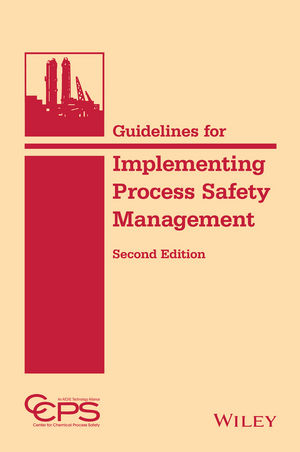
The International Safety Equipment Association’s (ISEA) Instruments Group has updated its guidelines for the calibration and verification of portable gas monitors which alert workers to the presence of toxic and otherwise hazardous gases. Originally published in 2002, the document gives employers and users uniform guidance on the frequency and types of tests and checks to ensure equipment functionality.
The 2010 revisions include:
- Expanding the scope of the guidance for portable monitors beyond confined spaces to include all workplace settings.
- Updating recommendations on incorporating current technology and practices.
- Emphasizing to users, employers and regulatory agencies the importance of validating the operational capabilities of portable gas monitors.
Workers and employers who use portable gas detection equipment now have a concise, easy-to-follow set of recommendations offering key information on when to test, check and calibrate their instruments,” said Mine Safety Appliances Co.’s Tom Salapow, Instruments Product Group chair. “The statement both removes confusion and guesswork about these potentially life-saving steps, and it explains bump tests, calibration checks and full calibration based on real-world use of these devices.”

New key calibration guidance
First and foremost, the revised statement clarifies the daily regimen for sensor verification: A bump test or calibration check should be done before each day’s use. If the instrument fails the bump test or calibration check, users should conduct a full calibration on the instrument. The updated statement removes a provision from the previous version that allowed for a month-long gap between sensor verifications.
Calibration checks, which have been common in the field, are now included in the statement. A calibration check is a quantitative check to make certain a specific concentration of a test gas is reaching the sensor. In a calibration check, a known traceable concentration of a test gas is used to make certain the sensors and alarms respond to the gas within the manufacturer’s acceptable limits - typically ±10-20% of the test gas concentration, unless otherwise specified by the manufacturer. In a calibration check, there is no adjustment of the sensor. The statement clarifies that bump tests are qualitative checks that make certain gases can get to the sensor and that the alarms for the lower explosive limit are working.
Finally, the new statement specifically addresses various conditions where sensor verification is needed. For example, a bump test should be conducted if there is a change in custody of the monitor, which could even include one employee giving the device to another employee, who will be working in a different work setting or environment during the same shift. Also, bump testing is recommended if the instrument is dropped on a hard surface or submerged in liquid. Other conditions requiring sensor verification are listed in the statement.
What remains the same?
The definition of “full calibration” remains the same - adjustment of the sensor’s response to match the desired value compared to a known traceable concentration of test gas. The statement notes that a full calibration should be conducted in accordance with the manufacturer’s instructions.
OSHA cites this ISEA statement in a Safety and Health Information Bulletin; ISEA is working to get OSHA recognition of the revised statement, which may be downloaded free of charge from ISEA’s Web site, http://safetyequipment.org/userfiles/File/calibration_statement-2010-Mar4.pdf.
What's next?
ISEA’s Instruments Group member companies are working on a selection, use and maintenance for fixed-site detection systems. The companies recognize that in some workplaces, the individual in charge of maintenance or operations is also responsible for worker safety and health. As a result, users of fixed-site detection systems now range from sophisticated safety pros all the way to workers with little or no background in such systems. Knowing what type of sensor is needed and where the sensors should be placed will be valuable information to any user. Product group member companies are also considering instituting a program that would track market trends for gas detection instruments.
National standards secretariat
The Instruments Product Group also is the secretariat for two American national standards: ANSI/ISEA 102-1990 (R2009) for gas detector tubes and ANSI/ISEA 104-1998 (R2009) for diffusive type air sampling devices, or passive monitors. Although both standards have been around for awhile, they both were reaffirmed in 2009. The ANSI/ISEA 102 standard is used by the Safety Equipment Institute (SEI) as the basis for its gas detector tube certification program. In addition, the group is officially represented on other standards committees for American National Standards Institute, ASTM International, American Industrial Hygiene Association and National Fire Protection Association, and has worked with the Department of Homeland Security on gas detection for emergency responders.
Manufacturers of environmental monitoring and measuring devices have a home in the Instruments Group of the International Safety Equipment Association (ISEA). Their products include fixed and portable air-sampling monitors, gas detector tubes and sampling pumps, passive dosimeters, and other instruments used in general industry, construction, and emergency response.


